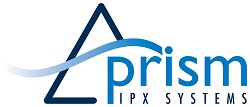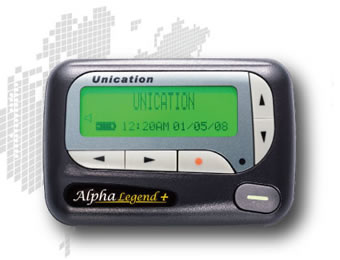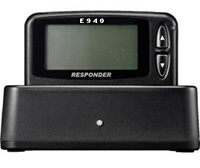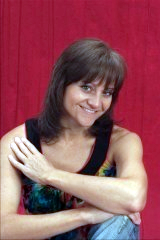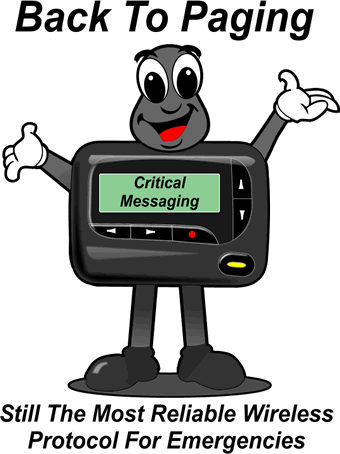 BloostonLaw Telecom Update Published by the Law Offices of Blooston, Mordkofsky, Dickens, Duffy & Prendergast, LLP [Portions reproduced here with the firm's permission.] www.bloostonlaw.com |
| Vol. 14, No. 28 | July 13, 2011 |
 Obama Seeks To
Eliminate Outdated Rules President Obama has issued an Executive Order advising federal regulatory agencies, including the FCC, to review and do away with outdated rules. Specifically, the Executive Order asks these federal agencies (a) to facilitate the periodic review of exist"ing significant regulations, and consider how best to promote retrospective analysis of rules that may be outmoded, ineffective, insufficient, or excessively burdensome, and to modify, streamline, expand, or repeal them in accordance with what has been learned. Such retrospective analyses, including sup"porting data and evaluations, should be released on-line whenever possible; and (b) within 120 days of the July 11 date of the Order, each independent regulatory agency should develop and release to the public a plan, consistent with law and reflecting its resources and regulatory priorities and processes, under which the agency will periodically review its existing significant regulations to determine whether any such rules should be modified, streamlined, expanded, or repealed. The President’s action follows (1) Rep. Greg Walden’s (R-Ore.) draft bill to reform FCC processes (BloostonLaw Telecom Update, June 29); (2) Rep. Robert Latta’s (R-Ohio) HR 2289, the FCC ABCs Act, that would require the Commission to include a cost/benefit analysis in each of its rulemakings (BloostonLaw Telecom Update, June 29); (3) the FCC’s own statement that it would remove the out-dated and previously repealed “Fairness Doctrine” from its rules (BloostonLaw Telecom Update, June 8); and (4) the FCC’s June 3 Public Notice requesting comment on nearly 100 pages of proceedings that could be subject to termination (BloostonLaw Tele"com Update, June 8). FCC Chairman Julius Genachowski said he welcomed the President’s Executive Order, adding that “I have made regulatory reform a top priority, improving FCC processes and decisions to support innovation, economic growth, and America’s global competitiveness.” |
 INSIDE THIS ISSUE - FCC proposes rules to fight “cramming” on phone bills.
- FCC adopts measures to strengthen E911 location accuracy regulations.
- FCC seeks comment on implementing Local Community Radio Act.
- Court strikes down FCC’s media cross-ownership rule, Diversity Order.
- Comment sought on Pac-West, Verizon petitions regarding tariffed access charges.
|
FCC Proposes Rules To Fight “Cramming” On Phone Bills At its July 12 open meeting, the FCC adopted a Notice of Proposed Rulemaking (NPRM) seeking comment on measures to protect consumers from "mystery fees" and "cramming," which is the illegal placement of an unauthorized fee onto a consumer's monthly phone bill. Specifically, the FCC proposed rules that would: (1) require landline telephone companies to notify subscribers clearly and conspicuously—at the point of sale, on each bill, and on their websites—of the option to block third-party charges from their telephone bills, if the carrier offers that option; and (2) strengthen the Commission’s requirement that third-party charges be separated on bills from the telephone company’s charges. In addition, both landline telephone companies and Commercial Mobile Radio Service (CMRS) providers, such as wireless telephone companies, would have to include, on all telephone bills and on their websites, a notice that consumers may file complaints with the FCC and provide the Commission’s contact information for the submission of complaints. These proposed rules would help landline telephone consumers detect unauthorized charges that may come from third parties by keeping all third-party charges separate from all telephone company charges, and would also help consumers block those charges. Most landline phone companies now allow consumers to block third-party charges, but may only tell consumers about that option after they have complained about an unauthorized charge. Because many consumers complain that it is difficult to get unauthorized charges resolved, the new rule on FCC contact information would let consumers know they can come to the agency for help if they need it, the Commission said. In addition, the NPRM seeks comment on several other measures that could help consumers detect, rectify, and prevent cramming. The NPRM asks whether landline telephone companies should be: (1) required to offer subscribers the option to block third-party charges from appearing on their telephone bills; (2) required to notify consumers that they do not offer blocking service if they do not do so; (3) prohibited from assessing an additional fee for blocking services; and/or (4) prohibited from including third-party charges on telephone bills altogether. The NPRM also seeks comments on whether landline telephone companies and/or CMRS providers should be required to: (1) provide accurate contact information for third-party vendors on their telephone bills; and/or (2) screen third parties for prior rule violations or other violations of law before agreeing to place their charges on telephone bills. Finally, the NPRM seeks comment on whether the same rules that apply to landline telephone companies also should apply to CMRS providers and to providers of interconnected Voice over Internet Protocol (VoIP) service. The FCC said the proposed rules would strengthen its existing Truth-in-Billing rules, which were adopted in 1999 and amended in 2005. Despite these rules, the FCC’s own complaint data, as well as data from the Federal Trade Commission (FTC), and from state and local law enforcement and regulatory agencies, show that cramming remains a problem for landline telephone ser"vice and is an emerging problem for CMRS, the Com"mission said. It added that the complaint numbers likely understate just how widespread cramming is. According to the FCC, most consumers don’t know when there are crammed charges on their bills. Crammers of"ten avoid detection by charging a small amount to each consumer—as little as $1.99 per month—or describing charges in a manner that make them appear to be for services from the phone company, such as voicemail or web services. Unauthorized charges often go undetected for months or even years. The Commission said a recent survey showed that only 5% of consumers who were impacted by a particular cramming company were aware of the monthly charges. Based on the same survey and state data, the FCC believes an estimated 15 to 20 million American households a year potentially have these mystery fees on their monthly landline phone bills. The FCC said its proposed rules are designed to help consumers detect cramming by highlighting third-party charges on the bill; prevent cramming by using blocking options where they are available; and seek re"dress by complaining to the FCC if necessary. The FCC said consumers can play a critical role in fight"ing cramming by regularly checking their telephone bills for unauthorized charges, disputing unauthorized charges, reporting instances of cramming to the FCC, and using the blocking service offered by their telephone company. Consumers also can urge their telephone companies to provide blocking if it is not already available. The FCC said the NPRM is part of a larger effort to combat cramming. The FCC recently approved a settlement with Verizon Wireless over “mystery fees” totaling over $50 million that were placed on bills by Verizon itself (BloostonLaw Telecom Update, November 3, 2010). (Not all cases of cramming involve third parties.) Under the settlement, Verizon Wireless agreed to refund the over-charges to its customers and made a $25 million voluntary payment to the U.S. Treasury. Last month, the FCC issued four Notices of Apparent Liability for Forfeiture (NALF) proposing $11.7 million in civil fines against four telecommunications companies that appear to have engaged in widespread cramming (BloostonLaw Telecom Update, June 22). Similarly, the FTC has been aggressively pursuing third parties who engage in cramming and has won several judgments in court. In addition, the Senate Committee on Commerce, Science, and Transportation, under the leadership of Senator John D. Rockefeller IV (D-W.Va.), has been investigating cramming. “The investigation shows that this practice could be costing Americans $2 billion a year, that the nation’s largest telephone companies are profiting from it, and that third-party landline telephone billing has largely failed as a legitimate method of payment,” Rockefeller said. A Committee hearing on cramming is scheduled for today (July 13). In a separate statement, FCC Chairman Julius Genachowski pointed to a couple of the more flagrant cramming violations. He said that “one consumer complained to the North Carolina Attorney General’s office about a company that claimed he had ordered its long-distance service over the Internet. As he told the AG’s office, that was impossible because he doesn't own a computer.” The Chairman also noted that “a consumer in Washing"ton, D.C. victimized by cramming was told by the cram"ming company that he had authorized the charge. When the consumer asked for proof, the company gave him an “authorization” record with someone else’s name, a non-working email address, and a street address in Berkeley Springs, West Virginia that turned out to be the address of the Berkeley Springs Chamber of Commerce.” Comments in this CG Docket No. 11-116 proceeding will be due 60 days after publication of the item in the Feder"al Register, and replies will be due 30 days thereafter. BloostonLaw contacts: Hal Mordkofsky, Ben Dickens, Gerry Duffy, and John Prendergast. FCC Adopts Measures To Strengthen E911 Location Accuracy Regulations The FCC, at its July 12 open meeting, adopted measures to strengthen the Enhanced 911 (E911) location accuracy rules for wireless carriers and sought comment on improving both 911 availability and E911 location determination for Voice over Internet Protocol (VoIP) services. Specifically, the Commission adopted a Third Report & Order (R&O), Second Further Notice of Proposed Rule"making (FNPRM) and Notice of Proposed Rulemaking (NPRM). The FCC said that E911 technology automatically pro"vides a 911 call operator with the caller’s telephone number and location information from either a landline or a wireless phone. Wireless carriers have historically pro"vided E911 location information by one of two methods: “handset-based,” where location information is generated by Global Positioning System (GPS) or similar technologies installed in the caller’s handset, or “network-based,” where location information is generated by triangulating the caller’s wireless signal in relation to nearby cell sites in the carrier’s network. The FCC’s rules require wireless carriers to identify the caller’s location for a specified percentage of 911 calls within a range of 50 to 150 meters for carriers that use handset-based technology, and 100 to 300 meters for carriers that use network-based technology. In September 2010, the Commission adopted benchmarks for wireless carriers to meet these handset- and network-based accuracy thresholds at the county or Public Safety Answering Point (PSAP) level for increasing percentages of 911 calls over an eight-year period. At yesterday’s open meeting, the Commission announced that after the conclusion of the eight-year implementation period in early 2019, it will sunset the exist"ing network-based rule and require all wireless carriers to meet the more stringent location accuracy standards in the handset-based rule. The Commission said it will set a specific sunset date for the network"based standard at a later date, after further notice and comment. The Commission also required new wireless network carriers to meet the handset"based accuracy standard going for"ward. The FCC also required all wireless carriers to test their E911 location accuracy results periodically and to share the results with PSAPs, state 911 offices, and the Com"mission, subject to confidentiality safeguards. The Commission directed the Communications Security, Re"liability, and Interoperability Council (CSRIC) to make recommendations to the Commission in six months on specific, cost effective testing requirements and methodologies. With respect to VoIP services, the Commission is seek"ing comment on whether it should apply existing 911 rules that cover two-way interconnected VoIP services to “outbound-only” interconnected VoIP services, which allow users to place outbound telephone calls but not to receive inbound telephone calls. The Commission is also asking for ways it might ensure that all interconnected VoIP providers can provide automatic location information for VoIP 911 calls, rather than relying on the subscriber to register his or her location with the VoIP provider. This includes considering mechanisms that would enable “over-the-top” interconnected VoIP service providers and underlying network access providers to jointly support the provision of location accuracy information to PSAPs. The Commission is also seeking input on ways that location technologies that are already being developed for commercial broadband applications might be leveraged to support 911 location determination. Finally, the Com"mission is soliciting comment on how to improve location accuracy for 911 calls made from indoors, including large office buildings where it may be difficult to locate an individual in trouble based only on a street address, and directed the CSRIC to develop recommendations for cost effective indoor location accuracy testing. Commissioner Michael Copps supported the item, but he added: “To me public safety communication means two-way communications. Two-way communications become really important if an emergency call gets dis"connected, goes dead for any reason, or if other emergency responders need to contact the caller. So I am pleased that we will also inform ourselves about what consumers need in the way of receiving calls back from emergency call centers. I understand that the Net 911 Improvement Act bolsters our legal authority in this area. Nevertheless, as I have said before, I believe the Com"mission should look comprehensively at the proper classification of VoIP. At the risk of sounding like a broken record, our charge to protect the safety of the American people is clear and should never have to hinge on semantics or distinctions without a real difference.” At our deadline, the text of the items in this GN Docket No. 11-117; PS Docket No. 07-114; WC Docket No. 05-196, had not been released. BloostonLaw contacts: Hal Mordkofsky, John Prendergast, Richard Rubino, and Cary Mitchell. FCC Seeks Comment On Implementing Local Community Radio Act The FCC, at yesterday’s open meeting, adopted a Third Further Notice of Proposed Rulemaking (FNPRM) to implement the Local Community Radio Act (LCRA) to pro"mote community radio through the licensing of low power FM (LPFM) and FM translator stations. In its Third FNPRM, the Commission is seeking comment on a pro"posed processing policy for pending Auction No. 83 FM translator applications based on the spectrum available for LPFM in specific markets. The FCC said this approach would permit it to immediately lift the freeze on the processing of translator applications and resume the licensing of FM translator stations in most smaller markets and rural communities, while requiring the dismissal of pending translator applications in markets where little spectrum remains for new LPFM stations. The Commission also seeks comment on the goal of opening an LPFM window no later than summer 2012. In 2007, the FCC concluded that processing the 6,500 pending FM translator applications filed in Auction No. 83 would frustrate the development of the LPFM radio ser"vice. Accordingly, it established a going-forward limit of 10 pending applications per applicant, but then imposed a freeze to permit consideration of petitions for reconsideration of that limit. Congress subsequently passed the LCRA, which includes licensing directives to balance the competing demands of LPFM and FM translator station applicants for limited FM spectrum. In particular, Section 5 of the LCRA requires the FCC to ensure that licenses are available for LPFM and FM translator stations; licensing decisions are based on community needs; and translator and LPFM stations remain equal in status. The Third FNPRM seeks comment on each of these standards, concludes that the existing 10-application cap is inconsistent with those standards, and proposes adopt"ing instead a translator application processing policy based on the availability of spectrum for LPFM stations in specific markets. The Third FNPRM also asks whether the Commission should take additional steps to prevent trafficking in FM translator construction permits (i.e., the acquisition of the permits for the primary purpose of profitable resale of the bare permits, rather than for the primary purpose of constructing facilities and then providing service to the public) and whether to permit FM translator applications pending as of May 1, 2009, to rebroadcast AM stations in the same manner as FM translator stations authorized prior to that date. The Commission said all other LCRA implementation issues will be considered in a subsequent FNPRM. In his separate statement, Commissioner Michael Copps described the FCC’s action as “Low Power to the People.” He also said he thought the 3rd U.S. Circuit Court of Appeals’ decision on the media cross-ownership rule and Diversity Order (see separate story below) “underscored that it’s not just everyday citizens and public interest advocates who expect real diversity in their me"dia outlets—the statute and the courts expect it, too.” Copps said that “in this day of so much media consolidation, of mind-numbing program homogenization and dumbing-us-down news, new voices are critically important if we are really serious about sustaining America’s civic dialogue and citizen engagement. Consider the stats: Between 1996 and 2007 the number of commercial radio station owners in our country declined by almost 40%, and the largest two commercial companies in our markets currently have, on average, 74% of the total radio advertising revenue. So much for localism, diversity and competition. Quite a few full-power broadcasters have struggled to resist the trend, but it’s tougher every day for them to sustain their values in markets—a media market and a financial market—where the bottom line so often trumps the common good. Something more is needed, and a significant part of that “something else” could just be Low Power FM radio.” Comments in this MM Docket No. 99-25 proceeding will be due 30 days after publication of the item in the Feder"al Register, and replies will be due 15 days thereafter. BloostonLaw contacts: Hal Mordkofsky, John Prendergast, Richard Rubino, and Cary Mitchell. Court Strikes Down FCC’s Media Cross-Ownership Rule, Diversity Order The 3rd U.S. Circuit Court of Appeals in Philadelphia has struck down the FCC’s newspaper/broadcast cross-ownership rule on the grounds that the Commission did not provide adequate notice and an opportunity to comment. In Prometheus Radio Project v. FCC, the Court also remanded those provisions of the Diversity Order that rely on the existing “eligible entity” definition, and the FCC‘s decision to defer consideration of proposed definitions for small and economically disadvantaged businesses (SDBs), so that it may justify or modify its approach to advancing broadcast ownership by minorities and women during its 2010 Quadrennial Review. The Court affirmed other provisions in the FCC’s 2008 Broad"cast Ownership Order. The Court said the “eligible entity” definition adopted in the Diversity Order lacks a sufficient analytical connection to the primary issue that Order intended to address. “The Commission has offered no data attempting to show a connection between the definition chosen and the goal of the measures adopted—increasing ownership of minorities and women,” the 3rd Circuit said. “As such, the eligible entity definition adopted is arbitrary and capricious, and we remand those portions of the Diversity Order that rely on it. We conclude once more that the FCC did not provide a sufficiently reasoned basis for deferring consideration of the proposed SDB definitions and remand for it to do so before it completes its 2010 Quadrennial Review.” Additionally, the Court vacated and remanded the cross-ownership rule for the Commission to provide adequate notice and an opportunity to comment in the context of its 2010 Quadrennial Review. And because it determined that Commission procedures used in adopting this rule violated the Administrative Procedure Act (APA), the Court did not address any challenges to the substance of the rule. The 3rd Circuit noted that the hours before the final Commission vote on the 2008 Order “were a scramble.” It said that “the 2008 Order was not circulated to the Commissioners until 9:44 p.m. the night before the vote. Even that draft had sections missing. The Commission"ers received a new version of the [cross-ownership] rule at 1:57 a.m. on the day of the vote. At 11:12 a.m. that same morning, another version of the [cross-ownership] rule was circulated that contained revisions to the four-factor test that would be employed in every case. Never-the-less, later that same day the Commission, by a 3-2 vote, adopted the 2008 Order and the Diversity Order.” The dissenters were Commissioner Michael Copps and then-Commissioner Jonathan Adelstein. Further, the Court noted that until former Chairman Kevin Martin published a 2007 Op-Ed piece in the New York Times and issued a press release, “the public did not know even what options he was considering, let alone the Commission.” Regarding the cross-ownership rule, the 3rd Circuit said that several of the FCC-commissioned economic re"search studies on media ownership attempted to address minority and female ownership issues. “However, as the Congressional Research Service (CRS) concluded, all the researchers (and the peer reviewers) agree that the FCC‘s databases on minority and female ownership are inaccurate and incomplete and their use for policy analysis would be fraught with risk,” the Court said. The Court let stand the FCC’s decision to grant five permanent waivers of its cross-ownership rule, because it said it did not have jurisdiction to hear challenges to the waivers. The Court also let stand the local television ownership rule, which allows an entity to own two TV stations in a single market, provided that at least one of the stations is not ranked in the top four. Additionally, the local radio ownership rule was left intact. This rule em"ploys a geographic method for determining radio markets. Further, the Court let stand the dual network rule, which allows common ownership of multiple broadcast networks, but prohibits mergers among the top four net"works. Additionally, the Court disagreed with contentions that the transition to digital radio would obviate any perceived differences between AM and FM stations. “First,” the Court said, “digital radio is still in its early stages. As the FCC points out, as of July 2009 only 6% of AM radio stations were authorized to transmit digital signals. Also, its 2008 Order recognized that the digital transition may actually exacerbate the technical differences between AM and FM stations because FM stations have rights to more spectrum and are further along in their digital transition. Although the digital transition may ultimately have a significant effect on the technological and economic advantages of FM stations, it has not yet done so. Thus, the FCC was justified in declining to rely on it in evaluating this rule.” Responding to the 3rd Circuit’s decision, Commissioner Copps said: “This decision is a huge victory for the mil"lions of Americans who have gone on record demanding a richer and more diverse media. The Third Circuit has brought into clear focus the shortfalls of two previous FCCs on media ownership and their lackluster performances in encouraging more minority and female owner"ship of our broadcast outlets. I am pleased that the 2008 newspaper-broadcast cross-ownership rule, which would have opened the door to more consolidation and less news, has now been returned to the Commission. The rule and the process that brought it forth were highly inimical to media democracy.” BloostonLaw contacts: Hal Mordkofsky, Ben Dickens, Gerry Duffy, and John Prendergast. COMMENT SOUGHT ON Pac-West, VERIZON PETI"TIONS REGARDING TARIFFED ACCESS CHARGES: The FCC’s Wireline Competition Bureau (WCB) seeks comment on petitions filed on June 28, 2011, by Pac-West Telecomm, Inc. (Pac-West) and Verizon seeking declaratory rulings arising from a primary jurisdiction referral from the U.S. District Court for the Eastern District of California. Pac-West “seeks a declaration that, based on the Commission’s existing rules, an interexchange carrier (IXC) is required to pay a local exchange carrier’s (LEC’s) tariffed access charges when a LEC performs the necessary database query services, the query identifies a particular IXC as the intended recipient, and the LEC delivers a toll-free (or ‘8YY’) call to the responsible IXC (or an intermediate LEC with which the IXC is direct"ly interconnected), regardless of whether the call was initiated as Voice over Internet Protocol (VoIP) or Time Division Multiplexing (TDM) format.” Verizon requests that the Commission declare that Pac-West’s federal switched access tariff, as in effect during the period at issue in the federal court litigation (July 2008 to the present), is patently unlawful. Verizon asserts that “[t]hat ruling would effectively end the federal court litigation . . . without the need for the Commission to address any of the other issues the federal district court referred.” Comments in this WC Docket No. 11-115 proceeding are due August 8, and replies are due August 23. BloostonLaw contacts: Ben Dickens, Gerry Duffy, and Mary Sisak. LOUISIANA COMMISSIONER EXPRESSES CONCERN OVER FCC’s USF/ICC PROPOSALS: Louisiana Public Service Commissioner Jimmy Field has written the FCC to request that any reforms to the federal Universal Ser"vice Fund (USF) and intercarrier compensation (ICC) support mechanisms should not jeopardize the ongoing viability of these programs and the critical support they provide to the rural telephone companies of Louisiana. Field said that the rural telephone companies have deployed their networks to ensure that service is available to all known inhabited rural residents in some of Louisiana’s most remote and difficult to serve areas. “Any reforms to the existing USF High-Cost and ICC mechanisms adopted by the FCC should not compromise the Rural Telephone Companies’ ability to continue to deploy the capital necessary to offer broadband telecommunications and information services,” Field added. He said the FCC “should consider only measured and reasoned reforms to the existing USF High-Cost and ICC mechanisms. While the FCC considers reforms that orient the USF toward more express support of broadband-capable networks and affordable end-user rates, it should ensure that any reforms adopted include retaining mechanisms that have worked to deliver broadband-capable networks in the rural areas of the nation to date.” Many of the proposals outlined in the FCC’s USF and ICC NPRM, if adopted, could jeopardize universal service in the rural areas of Louisiana, he said. Sen. Mary Landrieu (D-La.) recently expressed similar concerns to the Commission (BloostonLaw Telecom Update, June 22). BloostonLaw contacts: Ben Dickens, Gerry Duffy, and Mary Sisak. NEW WTB CHIEF CONCERNED ABOUT SPECTUM USE, INEFFICIENT TRANSMISSION, EARLY TERMI"NATION FEES: FierceWireless reports that Rick Kaplan, the new FCC Wireless Telecommunications Bureau (WTB) chief believes one of the greatest challenges for his office is to figure out how to squeeze the most productivity out of existing spectrum. At an event hosted by the Atlas Institute and the University of Colorado's Silicon Flatirons Group, Kaplan said he would not comment directly on wholesale Long Term Evolution (LTE) provider LightSquared, which is embroiled in a controversy with the GPS industry over concerns that its network will interfere with GPS receivers, according to FierceWireless. Kaplan said that often technology will stay the same un"less it is pushed to become more efficient. "We need to make sure we aren't locking out valuable spectrum be"cause of inefficient transmission," he said. He also noted that GPS receivers were built at a time when it wasn't necessary to be concerned about potential interference, according to FierceWireless. Kaplan also said he wanted to explore early termination fees (ETFs). He said that he thinks operators may be using ETFs to lock consumers into staying with their current provider in ways that are anticompetitive. BloostonLaw contacts: Hal Mordkofsky, John Prendergast, Richard Rubino, and Cary Mitchell. NTIA SENDS FCC TECHNICAL REPORT RAISING INTERFERENCE CONCERNS ABOUT LIGHTSQUARED SYSTEM: The National Telecommunications & Information Administration (NTIA) has sent the FCC a technical report demonstrating that implementing LightSquared’s planned deployment for terrestrial operations poses a significant potential for harmful interference to Global Positioning System (GPS) service. The report, Assessment of LightSquared Terrestrial Broadband System Effects on GPS Receivers and GPS-dependent Applications, was prepared by the National Space-Based Positioning, Navigation, and Timing Systems Engineering Forum (NPEF) on behalf of the National Executive Committee for Space-Based Positioning, Navigation, and Timing (EXCOM). NTIA said it is aware that LightSquared has made modifications to its planned system, and that NTIA will work with the FCC to study the modifications. It said it is also reviewing the report recently submitted by the Technical Working Group (BloostonLaw Telecom Update, July 6). BloostonLaw contacts: Hal Mordkofsky, John Prendergast, Richard Rubino, and Cary Mitchell. LIGHTSQUARED CREATES “RURAL INITIATIVE”: LightSquared has announced today the creation of the Empower Rural America Initiative led by an advisory board that includes former Senator Byron Dorgan of North Dakota and former Representatives George Nethercutt of Washington and Charlie Stenholm of Texas. The group will partner with LightSquared to: - Work with small cities and rural communities to ensure the deployment of this new satellite and broadband service;
- Work with LightSquared and other parties to make sure device filters and other approaches are developed that will resolve any GPS issues related to precision agriculture and other areas;
- Ensure that LightSquared's integrated satellite network can help rural markets augment their broadband and GPS services to provide greater accuracy and continuity of service;
- Address the unique public safety concerns of small towns and rural communities by making the deployment of satellite communications ser"vices available to assist people in these areas in the event of a disaster, such as tornadoes, floods or other service disruptions to traditional communications systems;
- Help close the broadband adoption gap in rural America. Broadband is critical to rural areas where it can create jobs, contribute to economic development and introduce innovations in education, healthcare and public safety.
"There is an overwhelming need for reliable wireless broadband for public safety, education, healthcare and economic development in rural America. We can have a robust, accurate GPS network and also create a substantial new resource for rural America in the form of a wireless network that reaches areas that still don't have broadband access," said Dorgan. This newsletter is not intended to provide legal advice. Those interested in more information should contact the firm. |












